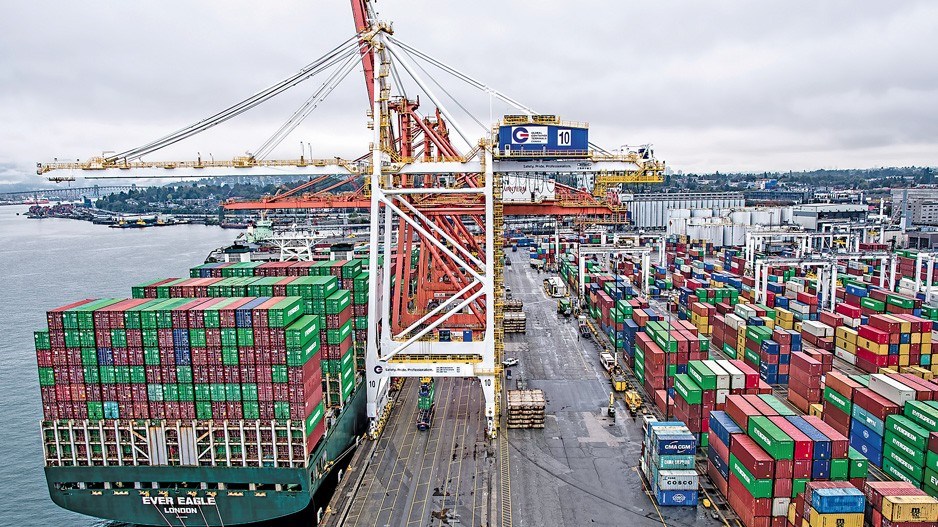With China applying to join the 11-country Trans-Pacific Partnership (CPTPP) trade pact, debate is heating up over whether Ottawa should strengthen its trade ties with Beijing by supporting the bid.
The CPTPP includes Canada, Japan, Australia and Mexico and is processing Great Britain’s application. The news of China’s application to join was a shock to many, because the United States originally proposed the CPTPP as a rival trade bloc to China before Donald Trump pulled out of talks in 2016.
It now adds a new dynamic in the intensifying battle for global economic supremacy between Beijing and Washington.
However, most analysts do not expect China’s bid to succeed.
Adding a market to the trade pact requires unanimous consensus within its membership, and Beijing has recently had an especially difficult relationship with Australia and Canada. Experts also point out that China would need to update its own laws, such as allowing the independent labour unions – something the authoritarian government in Beijing is unlikely to adopt.
Still, one trade analyst said Canada should treat the application seriously given the opportunity that is at hand.
“There is a possibility of significantly expanding the TPP,” said Carlo Dade, director of the Trade & Investment Centre at the Canada West Foundation.
Growing public antagonism in Canada towards Beijing over the last two years has been fuelled in part by the arrest of Huawei Technologies CFO Meng Wanzhou in Vancouver in late 2018, which was followed by the arrest of two Canadians in China and the institution of various trade sanctions against Canadian goods by Chinese authorities. There have also been high-profile cases of human-right abuses in Hong Kong and Xinjiang. However, despite the increased friction between the two countries, Dade said annual Canadian trade with China has been up 4.5% on average over last five years.
“These have been the worst five years arguably when it comes to Canadian relations with China, and yet Canadian consumers and businesses have – year in, year out without fail – increased their trade with China,” Dade said. “So as a government, [Ottawa] has to deal with this reality. People are screaming to stop dealing with China, and yet they themselves are doing everything they can to build relationships with China.”
A multilateral agreement like the CPTPP that includes China would be especially useful for B.C., Dade said, noting the province’s plans around the knowledge and services-based economy and the fact that the CPTPP opens the door to establishing value chains across multiple economies.
But Dade added that, regardless of the success of China’s CPTPP aspirations, Canada should reconsider joining the Beijing-led Regional Comprehensive Economic Partnership (RCEP) – a much less progressive free-trade bloc that includes Australia, Japan and Southeast Asia that nevertheless increases Canadian market access to places like Indonesia.
“It makes sense,” Dade said. “The argument from [Ottawa] is that we don’t want to join a trade network that’s not as progressive as the CPTPP. But how do you negotiate bilaterally with Indonesia and India? Do you think Canada will have any chance in negotiating bilaterally anything that’s close to the CPTPP? The answer is hell no.”
But not everyone is a fan of that idea.
Margaret McCuaig-Johnston, senior fellow at the University of Ottawa’s Institute for Science, Society and Policy, has worked extensively in Canada’s innovations-sector connections with China before becoming a key critic of Ottawa-Beijing links in the wake of China’s arrest of Michael Kovrig and Michael Spavor following Meng’s arrest.
McCuaig-Johnston said any initiative to join the RCEP should be preceded by the creation of a clear Indo-Pacific strategy or a plan in Asia that includes Canada’s links with countries like India to counter-balance Beijing’s growing aggressiveness in global affairs. She added that there is another country bidding to join the CPTPP – Taiwan, which China sees as a rebel province and has shunned on the international stage at every turn – that is far more deserving of Canadian support.
“I think, in the instance of [RCEP], we need to first focus on the CPTPP,” McCuaig-Johnston said. “We need to assist Taiwan to get into that … And we have not been sufficiently supportive on that front. I think we should support Taiwan before China because China has been the big elephant at every trade table except for the CPTPP … and it’s an outsized presence at these tables who likes to run things [its] own way.
“With the CPTPP, we should be looking at it as part of an Indo-Pacific strategy where we can expand trade with other regions. Maybe the RCEP is a platform where we can do that, but an analysis needs to be done first. And, quite frankly, I would err on the side of not doing it, because that’s China’s game. China runs the show there, and we’ve seen that – if they don’t like something – they will punish us.”
McCuaig-Johnston also noted that Ottawa has done little to support or push Canadian businesses to diversify beyond the Chinese market, and a more robust China policy – which includes more concrete support for moving supply chains to places like India and Southeast Asia – would create much more real, stable economic gains for Canada than a deepening of ties with China would.
“There’s a growing consensus that any company that is too heavily invested in China … should diversify to other countries in the region,” she said. “And to do that, they need a lot more help from the Canadian Trade Commissioner’s Service.” •




